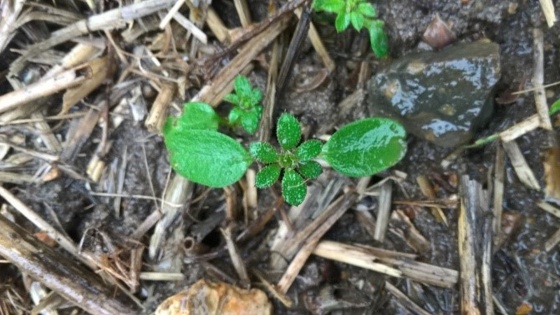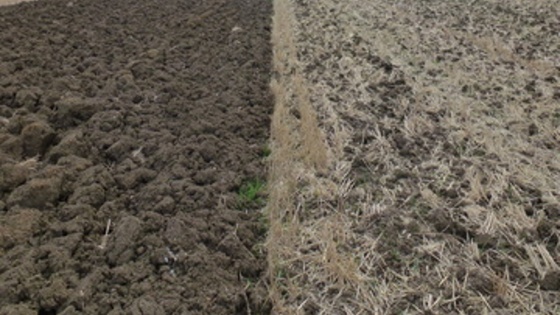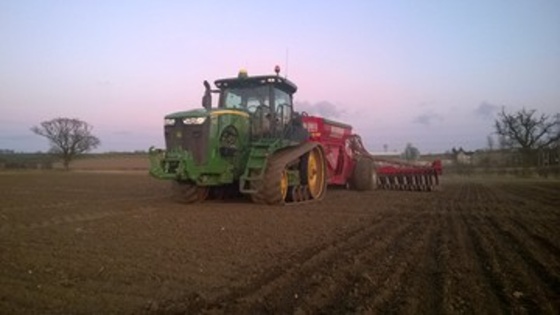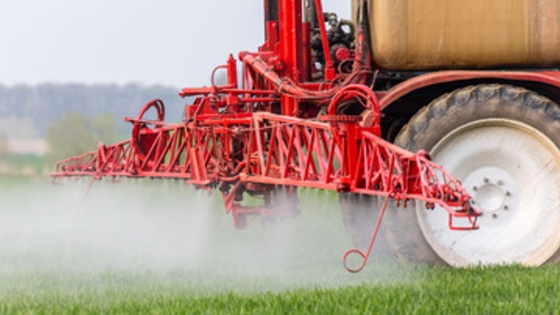Cleavers

Cleaver is a scrambling or climbing annual dicotyledonous weed. The stems are four-angled, 50-200cm long, and covered with minute, down-curved prickly hairs.
As a young plant the oval cotyledons are large and dark green and have a distinctive notch at the end. True leaves are narrow and prickly and appear in whorls of 6-8 around the stem.
When the plant is mature it has a small white four-petalled flower about 2mm across, these occur in loose clusters at the junction between the stem and leaves at the end of the flowering stem.
Cleavers have long stems which are covered by curved prickles which help the plant scramble through the crop. The stems branch from the base of the plant. The cleaver seed is covered in hooked hairs that easily stick to clothing and animal fur.
Cleavers are also known as Goosegrass or Sticky weed.
Cleavers profile
| Number of seeds produced per plant | 300 - 400 |
|---|---|
| Seed shed | from July onwards |
| Germination period | Spring -March, April and May, Autumn – September to November. It can continue germinating through mild winters. Will not germinate in waterlogged soils. |
| Germination depth | Up to 10cm |
| Primary dormancy | Some |
| Does it have a secondary dormancy? | Yes |
| Seed longevity | 1-3 years generally, but can be up to 5 years |
| Factor promoting germination | Unaffected |
| Rate of seed decline with cultivations | 75% per year |
| Geographical location | The cleaver is found all over the UK except in the very highest mountainous areas. |
| Soil type | It is found on well-watered humus-rich loam and clay soils and grows best on highly fertile soils. |
| Impact | The cleaver is highly competitive to wheat, 100 plants per m2 in autumn would lead to approximately 45% yield loss. Adult cleavers plants can be very large and can choke wheat crops by growing over the top of the canopy. However, cleaver competition can affect all stages of cereal yield (grain weight, ear number and grains per ear) so cannot be tolerated and must be controlled in crop. Combine harvesting of the crop is severely affected by the presence of cleavers, including blocking the mechanism of the combine, causing crop lodging pre-harvest and subsequently reducing crop yield. Germination is favoured by winter cropping systems, and the weed has spread north and west following the trends in winter cropping. There is a second flush of germination in the spring, requiring secondary control methods. Some 3% of oilseed rape samples are rejected because they contain more than 4% of cleavers seed. The seeds can also be difficult to remove from cereal samples and can cause losses of grain. |
| Resistance risk | There are currently no known resistant populations of cleavers in the British Isles, but resistance to ALS inhibiting herbicides (sulfonylureas) has been reported in Turkey and China. Resistance to Fluroxypyr has also been reported in China. |
| Soil Management | Soil Management |
| Cultivations strategy | Seeds of cleavers are less palatable to predators than other seeds so seeds survive in stubbles than other species. Seeds also show a moderate level of dormancy especially when immature and this limits early emergence in September, most emergence occurring in October and November. Cleaves do not respond to stubble cultivations so early autumn management is not critical. Cultivations during October will be beneficial for control of cleavers as this the peak emergence month. |
| Rotation | A single year fallow can have a major effect on cleaver numbers with a decline of 75% expected. Cultivating during October and again in the spring. |




